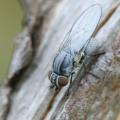Diptera.info :: Identification queries :: Diptera (adults)
Who is here? 1 guest(s)
|
similarities
|
|
| bugie |
Posted on 23-04-2006 14:19
|
|
Member Location: Posts: 1 Joined: 23.04.06 |
Hello, I'm starting to learn about insects and found myself confused between the Asiliade, Syrphidae, Bombyliidae, Therevidae, and Stratiomyidae. They may all be similar in a way of having a bee like appearance. Who do you distinguish each separetly? Thank you!  |
|
|
|
| ChrisR |
Posted on 24-04-2006 10:12
|
|
Super Administrator Location: Reading, England Posts: 7700 Joined: 12.07.04 |
Like most insects, an expert can distinguish different families on sight just by the 'look' or by knowing a particular feature that is characteristic of the group. However, for a beginner I would recommend starting with a good key to fly families (I used "A key to the Families of British Diptera" by D.M. Unwin). Also, join local entomology groups and go out in the field with experts - and watch forums like this to pick up tips and expert advice.  Insects in groups like Diptera and Hymenoptera are usually keyed out using microscopes because the features that distinguish one group from another are very small. I only say this because you have to be ready to catch insects and take specimens if you are interested in identifying them accurately. If you don't have to be accurate 100% of the time then photographs are fun - you just have to accept that a lot of the time you will only get simple identifications to family or genus, not species.  Hmm, I just realised I didn't actually answer your question ... but I am sure there are some 'Larger Brachycera' experts out there who can. My understanding is that in the groups you mentioned the wing-venation can be very diagnostic but it would probably need diagrams to show you exactly what to look for  |
| Jump to Forum: |














